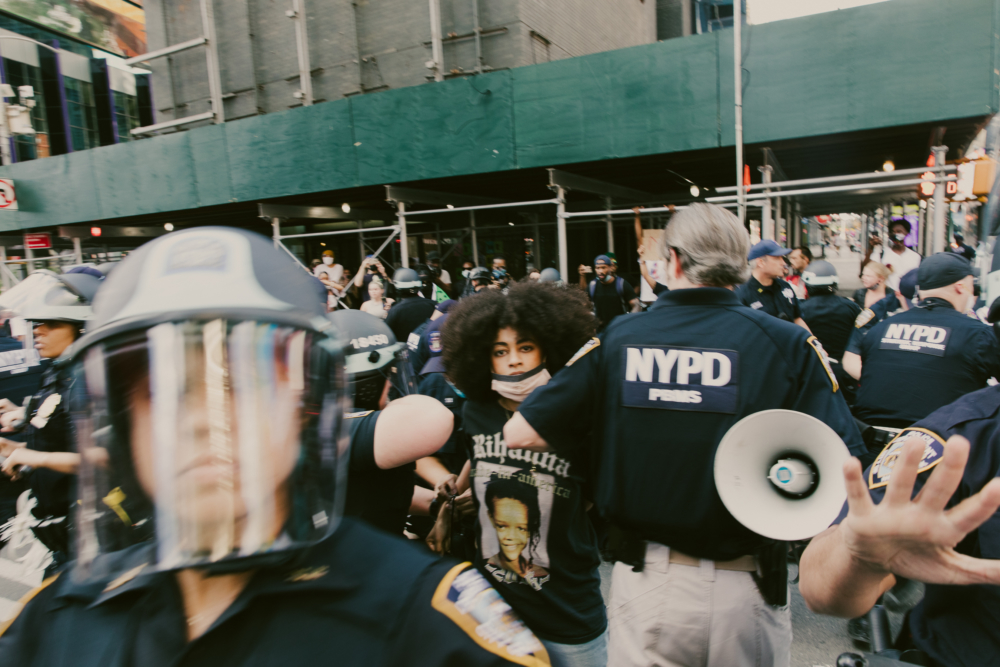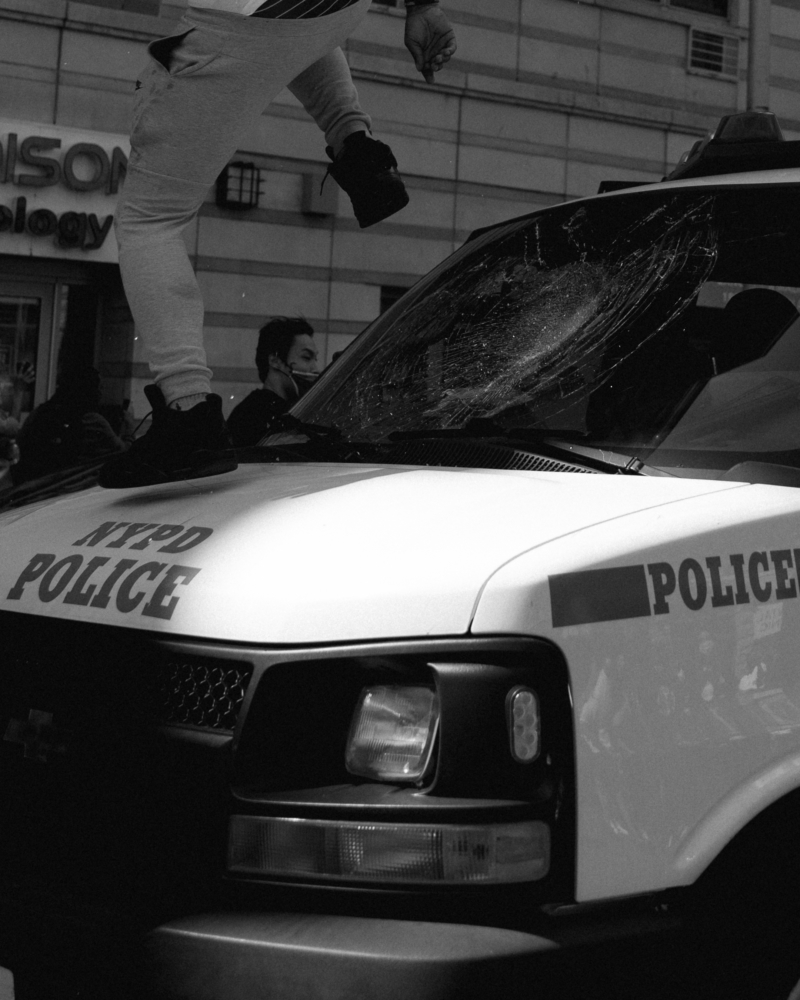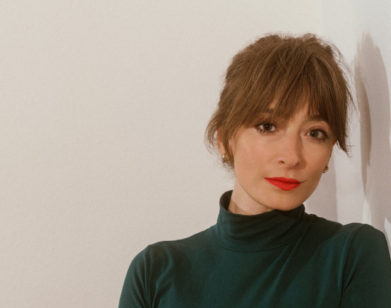Photographer Mark Clennon On The “Whimsical Defiance” of Capturing Black Stories
“Black stories are kind of like books,” says the photographer Mark Clennon. “You can ignore a book for as long as you want, but stories are permanent. It is y’all who are choosing not to open our book and read our stories.” The 32-year-old creative came to New York by way of Florida, where he studied public relations at the University of South Florida. After quickly realizing that American corporate life lacks pathways for Black talent to blossom, he decided to quit his job in tech and pursue photography. In 2016, Clennon picked up his first camera, and he hasn’t put it down since. In under four years, he has worked with everyone from Essence to Netflix, for whom he visited the set of Ava DuVernay‘s When They See Us, a sort of full-circle moment for the photographer. “She inspired me because I picked up the camera at 28, which I thought was too late. She didn’t start making films until 31.”
Recently, Clennon has caught the attention of the nation with his striking images of the Black Lives Matter protests and demonstrations across New York City. He attends the protests as both a photographer and an active participant, which allows him to infuse his personal perspective into the larger story of America’s fight for justice. “Why is it now that another Black man dies, and I’m getting this type of recognition?” he says of the sudden attention. “I feel conflicted about that, so I had to reassess my whole path to make sure that this is true to me.” That path consists of making sure no one passes up another opportunity to pay attention to Black stories, and that Black creatives feel the power to speak their truth. “You got to support all Black lives,” he says. “Trans lives, gay lives. That shit matters.”
Early one morning in Harlem, Clennon took us through some of his most vibrant photographs, from a fashion flower in the Bronx to a now-viral fist raised against Trump Tower.
———

Rahilou Diallo and Tahiry Bah styled in THEOPHILIO by Edvin Thompson. Hair: Helena Koudou. Makeup: Asha Mumin.
“I didn’t like this image at first because I felt like it was too colorful. As I finished the set and I looked back at it, I changed my mind. I describe my work as ‘whimsical defiance.’ There’s an image of a guy drinking from a water fountain that says ‘White Only,’ and he has this smirk on his face as he’s drinking the water. That’s kind of like the foundational ethos that I look towards. This is another example of Black women being fly, complementing each other, and really embracing the hair of Black people. I feel like that is probably one of the most expressive features of Black women and Black people. For Black women, every three months, it’s a new hairstyle. Black women get a new hairstyle for vacation. That is Black shit. I always want to highlight a bit of that creativity that we walk out the door with.”
———
“That’s a friend of mine. The protest was May 30th. It started in Harlem, and I think from now on I only like protests that start in Black neighborhoods. It feels different. When you go to Crown Heights, it feels different. All the Black people… I had goosebumps. I was just documenting the protest when I ran into her and another friend, maybe four or five minutes after I took the Trump photo that everyone’s seen. If I hadn’t seen them earlier, I probably wouldn’t have recognized them, so that was an important moment. I was in Times Square, standing on top of those concrete barriers they have out there, just getting the scope of the crowd. I see the police directing the traffic to turn, and they were turning. It was peaceful. The police then decided to escalate, and they were just on the outside. They grabbed the two of them. And I was seeing this from 30, 40 feet away.”
“She’s surrounded by police officers, and she wasn’t doing anything. They’re grabbing her, twisting her arm, and that moment when her eyes met my camera, it really centers the gravity of, like, this is a real person. You can tell there’s fear, but you can tell that she’s brave: ‘Look at this shit. Look what they’re doing to me.’ I love the Rihanna shirt in there because it puts a date stamp on it. In a different era, it would be a different artist, but this is 2020. Whatever Rihanna is doing in her avenues, she has that same kind of defiance—that authority to make sure that her Black voice is heard, and she amplifies other Black people. She’s building her own companies and hiring her own Black people. I really cherish these photos.”
———
“This one I actually have framed. It’s on the floor right now; I’m going to hang it up. The definition of this photo has changed for me since these protests, which is why I love photography. This shoot, I was prepping for Culture Con and I was stressed out. Some friends of mine said, ‘Hey, we got our hands on these clothes. We’ve got to shoot.’ I try not to stick too hard to a rigid plan. I consider myself a chef, and what I mean by that is, a chef goes, gets all these ingredients from the store. He has an idea of what it’s going to taste like, but the chef doesn’t really know until they put it together in the kitchen and taste it and tweak it. We were walking around Chelsea, passing by all these galleries. The model comes across the street like, ‘Hey, look at this public housing building. Take it in the window.’ There was a sheet in a window on the first floor of the public housing building, and it came out beautiful. The model is African, but when I look at the image, it reminds me of Haiti so much because of the colors. The Black skin, the red, white, and blue, like the Haitian flag. I just think about how the Haitian people liberated themselves. They overthrew their government and they said, ‘This is our country now.’ This is a Black man in a place that isn’t deemed beautiful, creating an image that kind of transcends nationality. It’s just resonating with me in a different way this month than it has in the past.”
———
“I think a lot of these images are effective because I’m just as angry as the people in them. I have the same feelings. They’re going through Spanish Harlem. At the front, you have the police van escorting them, like it’s a parade. I was photographing the back of it—I don’t want to give too many details, because I don’t want anyone to get in trouble. I have more images that I’m just keeping because they show a lot of people’s faces. Somebody came off the corner and smashed the back of their shit with something while the police officers were driving. The police leading this protest, they just didn’t look right. It didn’t feel right, especially going through that part of Harlem. The officer hopped out; he was afraid. People did what they did to make sure he didn’t get hurt, but that car was just standing there, and that car quickly became a symbol of everything that we’re going through. Somebody hopped up there and expressed himself in a very effective way. I was just there to capture it.”
———
“We ran out of time on our reservation for the photo studio. We wanted to shoot this in a library—that was the original concept of the shoot. This dress is massive. It’s like a flower. You can’t really sneak around with this, so there was a crowd of people in the Bronx—little girls taking pictures with their phones. She embodies that whimsical defiance, that existence, whether or not the white eye is looking. She’s not concerned about the white eye. My audience will always be Black people. I’m only speaking to Black people when I create. I’d say at first I wasn’t. I was trying to flip narratives and show them how Black people can be. But as I grew as an artist, I realized, ‘No, fuck all that.’ She’s a rose, a flower that has grown from this concrete, without anyone else’s help.”
———
“There’s something I want to get off my chest about this picture. I took the photo. The next day, Time reached out to me to talk about it. It was very new to me. I hadn’t processed it fully. You look at the flag behind the glass, and it’s like a flag being held hostage inside Trump Tower. When I look at it more, though, it’s like, ‘Is this flag being held hostage, or is it finding solace and protection and comfort within Trump Tower?’ Because America allowed Trump to exist and thrive in the first place. Fuck Trump Tower, and fuck that flag, too. Some people may interpret it as the Black man trying to save the American flag from the president, but no. That flag has oppressed us, too. That flag is being used to assemble hate today. So it’s just as much about the flag, and America allowing Trump to exist. I feel like people are missing that. People are asking to hang it in their homes like a trophy, like they solved racism. It doesn’t mean that for me, and it doesn’t mean that for so many other Black people. That flag is an act of aggression. I’m from Pensacola, Florida. If I see a truck with two American flags on each side, I know what time it is. So that’s not a symbol of freedom. I’m done trying to save it.”













